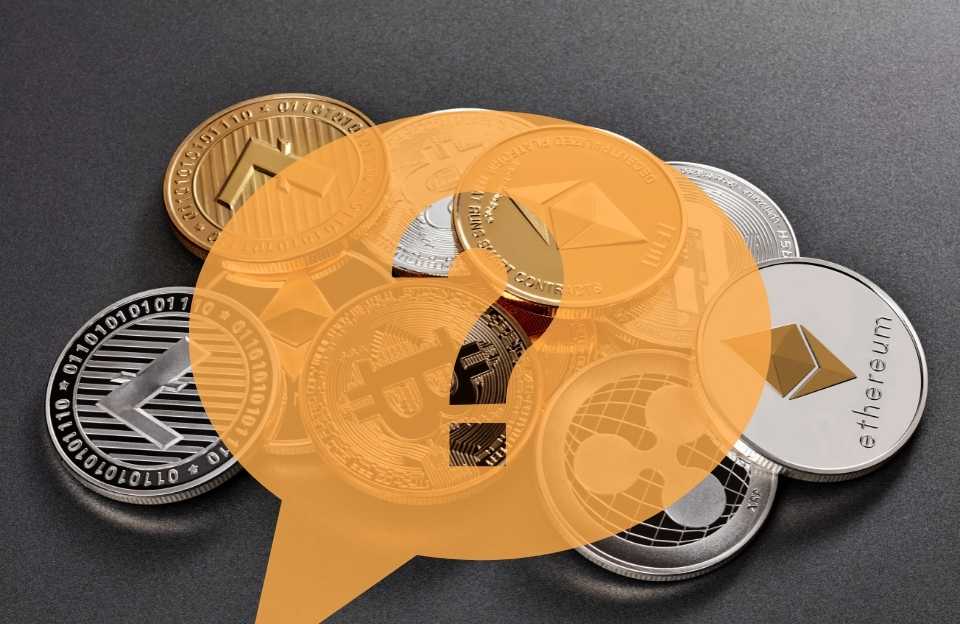Carla Moretti
What is CeFi? Centralized Finance Explained
Carla Moretti

What is CeFi?
CeFi, which stands for Centralized Finance, is a term used to describe traditional financial institutions that have been around for centuries. These are the banks, credit unions, and other financial service providers that have brick-and-mortar locations and operations.
However, there is a new kid on the block: DeFi.
Whereas CeFi relies on central authorities and middlemen to function, DeFi is built on decentralized protocols that often run on the Ethereum blockchain.
This means that there is no need for third-party intermediaries, and users can interact with each other directly. Because of this reason, DeFi is often hailed as being more transparent, trustless, and resilient than its CeFi counterparts by using a decentralized finance ecosystem.
How Does CeFi Work?

CeFi relies on central authorities to function. In the case of banks, for example, customers deposit their money with the bank, which then lends this money out to other customers in the form of loans. The bank makes a profit by charging interest on these loans. Other examples of CeFi include credit unions, hedge funds, central exchanges and venture capitalists.
CeFi vs. DeFi

One notable difference between CeFi and DeFi is that whereas CeFi institutions tend to be profit-driven (i.e., they aim to make money for shareholders), many DeFi protocols are non-profit oriented (i.e., they don’t have shareholders). This aligns incentives more closely with users, customers, and participants in the protocol than investors or speculators.
Another key difference is that while you must go through Know Your Customer (KYC) and Anti Money Laundering (AML) checks to use most CeFi services—which can be seen as a barrier to entry—DeFi is generally permissionless and available to anyone with an Internet connection.
How to use CeFi for your business?
There are several different ways that businesses can leverage CeFi to achieve their financial goals. For example, if you need financing for your business but do not qualify for bank loans due to a lack of credit history or collateral, you may be able to take out a loan from one of the many peer-to-peer cefi loan platforms in the CeFi space.
Additionally, suppose you are looking to invest your funds to earn interest in high-yield assets and have little to no prior investment experience. In that case, you may wish to try your hand at crypto trading of other assets via a DeFi platform such as Kyber Network, Ox, or MakerDAO.
Finally, if you want to send or receive money from your overseas business partners, you may wish to explore the use of blockchain-powered remittance services such as Ripple and SWIFT. Whatever your needs may be, CeFi has a wealth of options available to help you achieve your business goals.
Overall, whether you are a business owner looking to manage your finances more effectively or an investor seeking new investment opportunities, CeFi can help. By taking advantage of its many innovative tools and services, you can streamline your financial processes and achieve greater success in today’s rapidly changing business climate.
Case studies of businesses that have used CeFi successfully:
1. ABC Oil Company is one of the country’s largest oil and gas companies. Over the years, they have seen a steady rise in annual profits and market share. However, with intensifying competition and changing consumer preferences, they realized that they needed to adapt quickly or risk losing customers to their competitors.
CeFi offer the perfect solution for ABC Oil Company. With its ability to collect massive amounts of data quickly and efficiently, CeFi helped them gain valuable insights into customer preferences and the latest market trends.
This enabled them to optimize their production processes, reduce costs, and offer more competitive pricing to customers. Their sales increased significantly as a result, leading to even higher profits and market share.
2. XYZ Inc. is a global leader involved in the manufacturing of high-end electronics equipment. Over the years, they had consistently maintained their position as one of the top brands in their industry and built a strong reputation for innovation, quality, and customer service.
However, with rising competition and changing consumer preferences, they realized that they needed to adapt quickly or risk losing customers to their competitors.
CeFi proved to be an invaluable resource for XYZ Inc. CeFi’s ability to collect massive amounts of data quickly and efficiently enabled them to gain valuable insights into customer preferences and market trends.
This helped them optimize their production processes and marketing strategies, offering them more competitive pricing and allowing them to stay ahead of their competition.
The result was a high degree of sales, increased market share, and improved customer loyalty – all of which have helped XYZ Inc. become more profitable and successful over the years.
The Future of CeFi

It is clear that the future of CeFi looks bright as more and more businesses and individual investors seek out innovative financial products and services in an increasingly digital world. As new technologies such as blockchain continue to evolve, we expect to see even more significant growth and development in this crucial financial industry.
Some experts predict that in the coming years, we may see many traditional CeFi exchanges being replaced by cutting-edge DeFi protocols, benefiting businesses and consumers alike. Whatever the future holds, one thing is clear: the field of CeFi will continue to be a driving force behind innovation and progress in the global economy.
Final thoughts
In conclusion, it’s essential to understand both Centralized Finance, CeFi, and decentralized ecosystems before investing in any crypto assets or start with cryptocurrency trading. They both have their own strengths and weaknesses. If you’re looking for something with more transparency and security, then you might want to consider investing in the DeFi protocols.
However, if you’re looking for something less risky, then CeFi might be a better option for you. Either way, remember to do your research, seek diverse investment advice and consult with financial advisors before staking your money.
FAQ
Most frequent questions and answers
There are two main types of digital assets in the cryptocurrency world: centralized and decentralized. CeFi and DeFi represent these two different approaches to how blockchain technology is used, with centralized and decentralized finance referring to transactions that happen on a traditional financial network or one running on a blockchain, respectively.
Centralized finance, or CeFi, refers to any transactions that occur through a centralized platform such as a bank or other financial institutions.
These platforms typically store users’ funds and information in their own systems and require users to trust them to keep this data safe from theft and potential fraud. Transactions conducted through these platforms also need to go through an intermediary organization like a bank before processing, which can result in additional fees and delays.
A decentralized platform, or DeFi, refers to any blockchain-based transactions that takes place without the need for an intermediary institution on a decentralized exchange. Blockchain technology can facilitate transactions between parties in a secure and trustless way, so users don’t have to go through a central platform to send and receive funds.
Decentralized transactions are sometimes quicker than those conducted on traditional financial networks since they don’t need to be verified by intermediaries like banks.
The main difference between CeFi and DeFi is the two approach’s level of security and efficiency. While centralized financial platforms, such as a CeFi centralized exchange, typically provide a more stable environment with lower risks of fraud or theft, they can also come with high costs and transaction fees that can be burdensome to users.
Decentralized systems, on the other hand, provide a faster and more efficient way of conducting transactions without needing an intermediary institution. Still, they also come with their own risks related to security. Ultimately, the choice between CeFi and DeFi will depend on each user’s preferences and risk tolerance when managing their finances online.
One example of DeFi ecosystem is the Ethereum network, which allows users to transfer and receive funds through an automated smart contract system without needing a central financial institution. Another popular DeFi platform is Augur, which provides users with a secure way of betting on various outcomes worldwide via prediction markets.
Coinbase is a centralized platform allowing users to buy, sell, and trade different digital currencies through their website or mobile app. Coinbase would be considered CeFi because it represents a traditional financial network that uses intermediaries like banks to facilitate transactions between users. It also does not offer DeFi services, which is why it is considered one of the many centralized exchanges.
Web3 technology refers to a set of tools and protocols that are used to develop decentralized applications (dApps) on the blockchain. These tools and protocols give users more control over how their data is stored and used, allowing for more secure transactions without the need for an intermediary like a bank. Some examples of Web3 technologies include Ethereum, EOS, Polkadot, and Hyperledger Fabric.
CeFi lending refers to any loan provided by a centralized financial institution, such as a bank or other institutional lenders. These types of CeFi loans typically come with stricter eligibility requirements and higher interest rates than DeFi lending or other crypto lending due to the amount of risk involved with these transactions.
Some examples of CeFi lending include mortgages, personal, and student loans.
Some of the main CeFi risks include fraud, theft, and high transaction fees. Since most centralized platforms are controlled by one or a small number of entities, they can be more vulnerable to malicious attacks that attempt to steal funds or information from users.
And these platforms often charge higher transaction fees than decentralized solutions to fund their services’ operating costs. As a result, users may need to pay more for using these platforms than they would with alternative solutions like DeFi.
One way to earn yield with CeFi is by taking out a loan from a centralized financial institution. This type of loan typically comes with higher interest rates than DeFi lending due to the amount of risk involved with these transactions.
Additionally, users can make many different types of investments to generate passive income through CeFi, such as bond and stock trading or real estate investment.
The yield from CeFi investments typically comes from the fees charged by centralized financial institutions when users take out loans or perform other transactions of fiat currencies.
For example, credit card companies charge interest on outstanding balances to cover the costs involved with providing these services, such as transaction verification and fraud protection. Other sources of yield for CeFi investments can include:
- Interest earned on deposits
- Dividends from stocks or real estate investments
- Rent generated by properties that are held in a portfolio
Some of the primary risks associated with DeFi include a lack of liquidity, cybersecurity concerns, and limited use cases. Since many DeFi platforms are still in the early stages of development, they may not have as many users or use cases as centralized alternatives.
Additionally, these platforms are often more vulnerable to attacks from malicious actors because they are decentralized and rely on a network of users for security. This lack of centralized oversight can also make it difficult to recover lost funds or trace transactions in the event of a security breach.
Margin trading is a type of investment strategy that involves borrowing money or other crypto assets to increase the size of one’s portfolio. This can be done by using leverage, which allows users to amplify their returns using borrowed funds. While this can lead to higher profits, it also increases the risk of loss due to fluctuations in the underlying asset prices. Additionally, it requires advanced trading skills to succeed, and it may be difficult for novice traders to understand all of the risks associated with this strategy.
There is no single best-centralized exchange, as the choice of an exchange platform will depend on a number of factors, including user preferences, access to different cryptocurrencies and digital assets, trading volume and liquidity, fees, security features, and more. Some popular crypto exchanges include Binance, Coinbase Pro, Kraken, and Poloniex.
Skrumble.com provides all its content for informational purposes only, and this should not be taken as financial advice to buy, trade, or sell any investment instruments or products, including but not limited to cryptocurrencies, or use any specific exchange. Please do not use this website as investment advice, financial advice, or legal advice, and each individual’s needs may vary from that of the author. Investing in financial instruments, including cryptocurrencies, carries a high risk and is not suitable for all investors. It is possible to lose the entire initial investment, so do not invest what you cannot afford to lose. We strongly advise conducting your own research before making any investment decisions. This post includes affiliate links with our partners who may compensate us.
To view our privacy policy read here.






